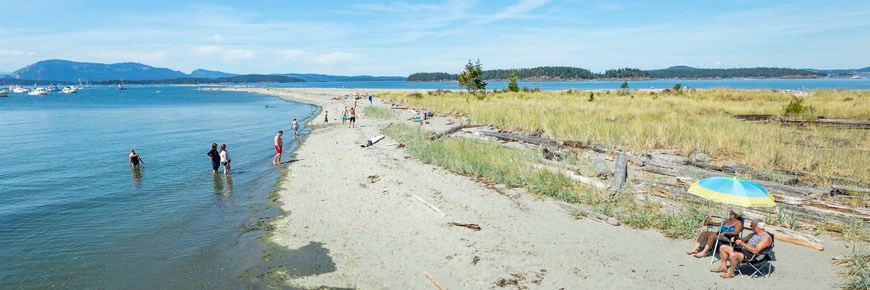My family and I took a trip out to Sidney Spit in Gulf Islands National Park Reserve.
Like most British Columbians, we’re crazy about the beautiful environment we live in and keen to be outside as much as we can. So we volunteered to help Parks Canada staff with ecological restoration on the spit, in this case by removing invasive European beach grass that threatens to overwhelm the endangered species that live among the low dunes. Several endangered plants and animals are found on the spit, with lovely lyrical names such as silky beach pea, contorted pod evening primrose and yellow sand-verbena.
We all want to keep species from sliding to extinction. We have a federal Species at Risk Act that aims to do just that, but it applies only on federal lands, a small sliver of B.C. (1.1 per cent). We do not have dedicated provincial legislation that would protect species at risk anywhere else in the province.
The mandate letter of provincial Minister of Environment and Climate Change Strategy George Heyman includes instructions to develop such legislation and the NDP/Green alliance has begun the consultation process. For too long, B.C. has gone without this legislation and species have suffered: B.C. has the highest number of species of any province in Canada but also the highest number of species threatened with extinction. Without significant work, many will be lost.
My colleagues and I have released a working paper with recommendations for developing a B.C. Species at Risk Protection and Recovery Act. Collectively, we represent a great deal of B.C. biodiversity expertise, from all of B.C.’s research-intensive universities. We have identified several shortcomings of the federal act, including components that lead to delays in listing species, delays in action to recover endangered species, and several biases in the process. Our recommendations for a B.C. act include:
1. Commit to principles of recovery, precaution and feasibility. The act would integrate with the provincial land-use planning framework, operate with sustained funding and commit to scientific integrity.
2. Take an evidence-based approach to recovery. We recommend the creation of an independent oversight committee to prioritize assessment, list species, guide prioritization of recovery actions and evaluate effectiveness. Species listing would be automatic to avoid political interference. Recovery teams would be established for species or multi-species groups. Recovery actions would be prioritized quickly and transparently, and aim to recover all species.
3. Implement effective protections and stewardship, including automatic protections on Crown land and consultations with landholders to apply additional protections. Exemptions would be used sparingly and with justification. Stewardship activities would be evidence-based.
4. Ensure accountability to meet act objectives, through requiring government progress reports detailing the implementation of recovery.
These recommendations form the basis for a strong act to recover endangered species throughout B.C. More detail can be found in our report (scientists-4-species.org).
In the early-morning drive to get to Sidney Spit we drove across the Saanich Peninsula, one of the loveliest places to live in Canada. Other species thrive here, too: southern Vancouver Island was once the stronghold for Garry oak ecosystems, one of the country’s most threatened and biodiverse habitats. Now more than 95 per cent of Garry oak ecosystems are gone, and we need to do all we can to save what precious little remains.
B.C. would be better with a law that provides guidance on how to co-exist with endangered species. Our proposal suggests a strong way forward to develop an act that would ensure that B.C.’s incredible biodiversity such as golden paintbrush, western bluebird, rosy owl-clover, Great Basin spadefoot toad and grizzly bear are still found in the province when my grandchildren visit Sidney Spit decades from now.
Brian Starzomski, PhD, is Ian McTaggart Cowan Professor of Biodiversity Conservation and Ecological Restoration in the School of Environmental Studies at the University of Victoria.



